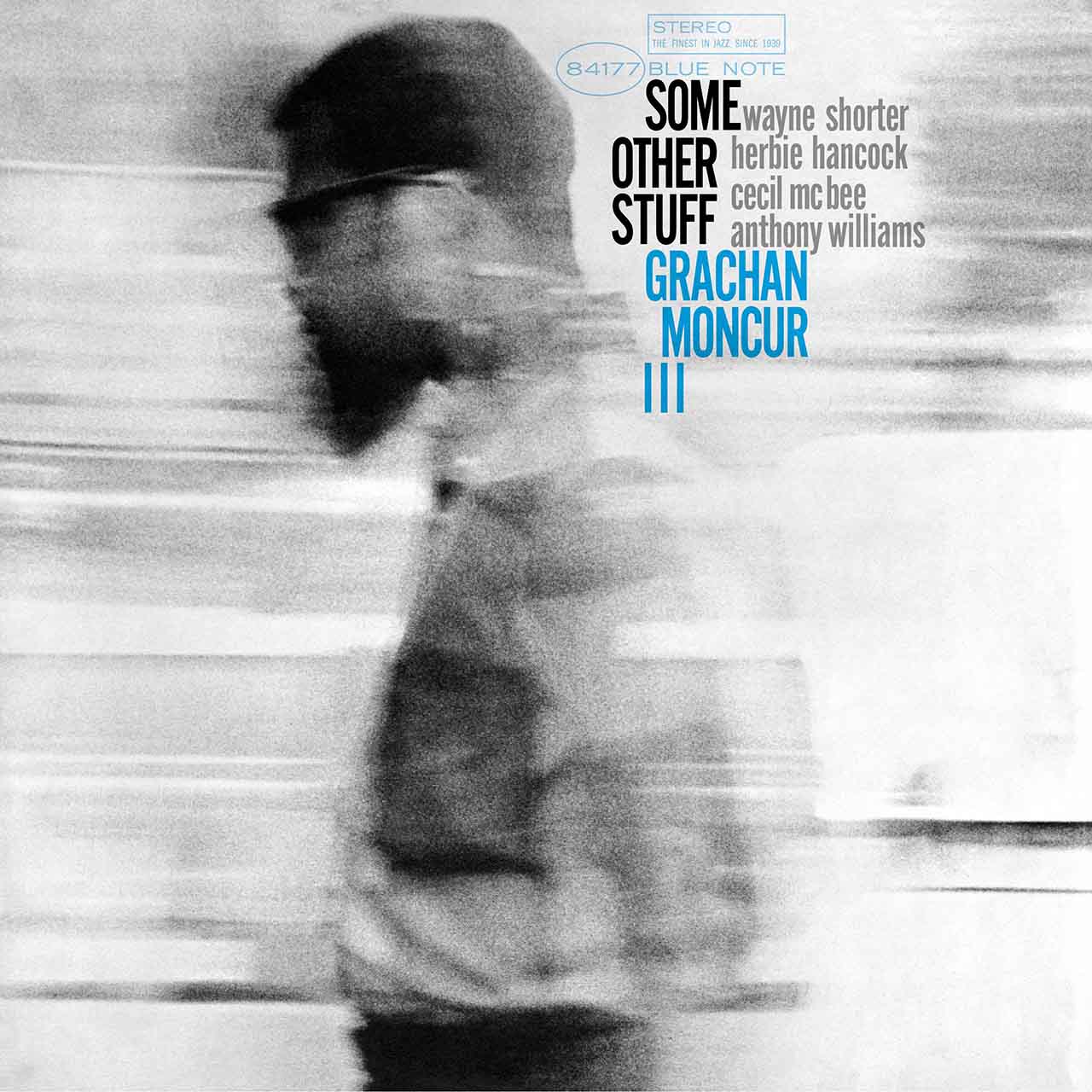1963 was a momentous year for Grachan Moncur III. That was when the 26-year-old Newark trombonist began a fruitful association with Blue Note Records. Debuting on Herbie Hancock’s second Blue Note LP, Point Of View, Moncur then appeared on One Step Beyond and Destination…Out!, two remarkable collections of groundbreaking progressive jazz by alto saxophonist Jackie McLean. On McLean’s records, Moncur contributed material that showed he was a composer with a unique voice. That was enough to convince Blue Note producer Alfred Lion to give the trombonist a shot as a leader in late 1963. The result was Evolution, a key early example of experimental music in Blue Note’s catalog. Seven months later, in July 1964, Moncur recorded his second Blue Note album, Some Other Stuff, an avant-garde touchstone that cemented his place as a jazz pathfinder.
Music was in Moncur’s blood: his father was a double bass player and his uncle played in a band called the Savoy Sultans. At nine, Moncur’s dad gave him a cello, but he preferred the trombone he found under a bed at home. As a teenager, Moncur played in the Nat Phipps Band with another budding New Jersey musician, Wayne Shorter. He would also test himself by sitting in on jazz club jam sessions, playing with legends like drummer Art Blakey.
Moncur’s breakthrough as a professional musician came in 1959 when he joined Ray Charles’ band. After two and a half years with the blind R&B genius, he blew his trombone in The Jazztet, Benny Golson and Art Farmer’s short-lived hard bop outfit, before landing at Blue Note.
For his second solo recording with producer Alfred Lion, Moncur chose sidemen whom he knew and trusted: his good friends Wayne Shorter, Herbie Hancock, and Evolution drummer 18-year-old Tony Williams, all like-minded musicians keen to push sonic boundaries. Significantly, all three were members of Miles Davis’ so-called “Second Great Quintet,” which played a key role in shaping post-bop jazz. On bass was Cecil McBee, whose credits ranged from Dinah Washington to Jackie McLean.
Some Other Stuff began with “Gnostic,” an eerie piece that was daring for its absence of a well-defined rhythmic pulse and the way it broke away from melodic, harmonic, and song-form conventions.
The African-themed “Thandiwa” – whose title meant “beloved one” in Zulu – was the album’s most conventional track with its swinging pulse. The piece’s jaunty groove and infectious melody had echoes of Thelonious Monk, a key influence on Moncur. “I would say that the studying of Monk probably led to everything,” he told All About Jazz in 2003. The album’s longest track, “The Twins,” an off-beat number inspired by Moncur’s younger twin brothers, has a playful nursery rhyme-like quality. In contrast, the closing cut, “Nomadic,” is a vehicle for Tony Williams’ dextrous, highly nuanced drumming, with occasional interjections by the rest of the band. “I don’t think too many cats could have kept it as interesting as Tony did,” Moncur told writer Don Heckman.
Sadly, there aren’t many more Moncur Blue Note dates. He later played with Archie Shepp in the late 60s and early 70s, continuing to fly the flag for avant-garde music, but his solo career never really took off in the way that many had predicted.
Reframing the trombone in an avant-garde context, Grachan Moncur III was a genuine pioneer whose innovations have often been overlooked. Building on the foundation of Evolution, Some Other Stuff showed him blossoming into an envelope-pushing player and composer who brought a new sensibility to jazz.



